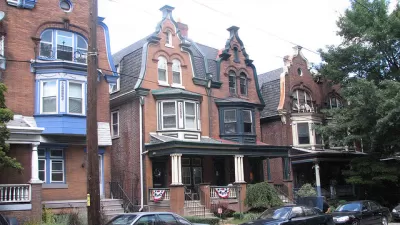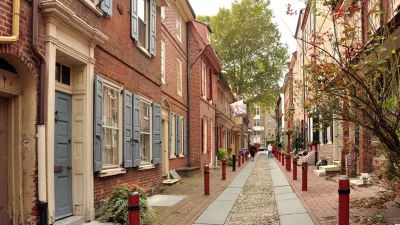On the tenth anniversary of the founding of PennPraxis, Tom Stoelker looks at the consultancy's contribution to advancing community-based planning, and several crucial projects, in Philadelphia.
Stoelker traces the history of PennPraxis, the nonprofit consultancy arm of the School of Design at the University of Pennsylvania, which was created to "allow both students and professors the chance to practice in a real-world environment through analyzing and developing proposals for actual urban situations."
In the decade since its establishment, the consultancy has had a profound impact on planning in Philadelphia, where it has laid the groundwork for the revitalization of the city's waterfront and spurred a citywide zoning overhaul, and elsewhere, as they've garnered $16 million in international consultancy fees.
As Stoelker notes, Praxis has had a lasting impact on the digital realm as well. "As Praxis developed its waterfront plan, they relied on traditional media to gain traction and also launched an independent and now a very popular website called PlanPhilly.com. 'PlanPhilly had more impact than anything that I can think of in years,' said Gary Jastrzab, executive director at the City Planning Commission. 'They really stepped in and created a whole new group that follows planning closely.'"
FULL STORY: Well Practiced

Trump Administration Could Effectively End Housing Voucher Program
Federal officials are eyeing major cuts to the Section 8 program that helps millions of low-income households pay rent.

Planetizen Federal Action Tracker
A weekly monitor of how Trump’s orders and actions are impacting planners and planning in America.

The 120 Year Old Tiny Home Villages That Sheltered San Francisco’s Earthquake Refugees
More than a century ago, San Francisco mobilized to house thousands of residents displaced by the 1906 earthquake. Could their strategy offer a model for the present?

Alabama School Forestry Initiative Brings Trees to Schoolyards
Trees can improve physical and mental health for students and commnity members.

NYC Outdoor Dining Could Get a Re-Do
The city council is considering making the al fresco dining program year-round to address cost concerns from small businesses.

HSR Reaches Key Settlement in Northern California City
The state’s high-speed rail authority reached an agreement with Millbrae, a key city on the train’s proposed route to San Francisco.
Urban Design for Planners 1: Software Tools
This six-course series explores essential urban design concepts using open source software and equips planners with the tools they need to participate fully in the urban design process.
Planning for Universal Design
Learn the tools for implementing Universal Design in planning regulations.
Ada County Highway District
Clanton & Associates, Inc.
Jessamine County Fiscal Court
Institute for Housing and Urban Development Studies (IHS)
City of Grandview
Harvard GSD Executive Education
Toledo-Lucas County Plan Commissions
Salt Lake City
NYU Wagner Graduate School of Public Service




























